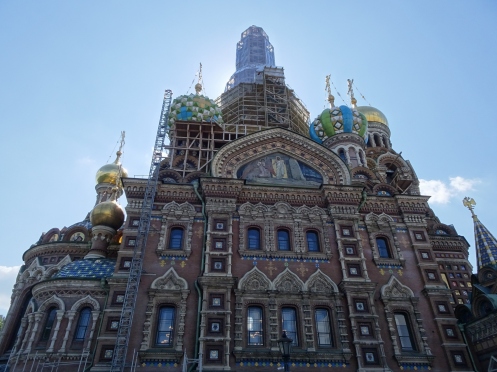
Church on the Spilled Blood . . .

Tsar Alexander II was assassinated in March 1881 by a bomb., which was thrown at his carriage. Since becoming the Tsar he’d been progressively changing Russia by freeing the serfs, who were virtual slaves of the land owners. He updated the military and the judiciary and made other reforms, but not everybody agreed with him.
There were various attempts on his life, which included an explosion in the Winter Palace and the derailment of a train. In the end it was a bomb thrown at his carriage that was successful.
In memory of the Tsar they built a church over the exact spot of his death. It is called The Church on the Spilled blood and inside the church there is a canopy that marks the place of his assassination.


It seemed to me that every part of the church had some form of religious painting on the walls, pillars, ceiling and floors.

Not being a great fan of elaborately painted churches, I never had a feeling of peace.
From what I’ve since read, it is only used as a church for commemorative services, but is mainly a museum, and a ‘must’ for the tourist trail, which I suppose, is the reason for my feeling of lack of peace.

Part of the ceiling.

The alter area? – I’m not sure.

A model of the church.
The cost of construction was met mainly by the Royal Family, and was built between 1883 to 1907.
After the revolution of 1917 the church was looted, and badly damaged. It was closed in 1932, and during WW2, due to the 900 day siege, it was used as a morgue.
After the war, it was used as a vegetable warehouse, and became known locally as the Saviour on Potatoes.
Some years later the authorities decided to restore the whole church, and it was covered in scaffolding. This went on for years, and people used to say that by the time the restoration is finished the Soviet Union would have collapsed. In 1991 the restoration was finished and the church reopened – on Christmas Day in 1991 the Soviet Union collapsed, and on the 26th December made way for the Russian Federation – coincidence?

Soviet flag

Russian Federation flag
Our next church was St Isaac’s Cathedral, which is the fourth consecutive church to be built on the same spot.

There were models showing the growth of the church from its early beginnings to today’s cathedral shown below


Saint Isaac of Dalmatia, died 383 AD. He was the patron saint of Peter the Great, who had been born on the feast day of St Isaac.

The cathedral took forty years to build, from 1818 to 1858 under the direction of Frenchman Auguste de Montferrand.
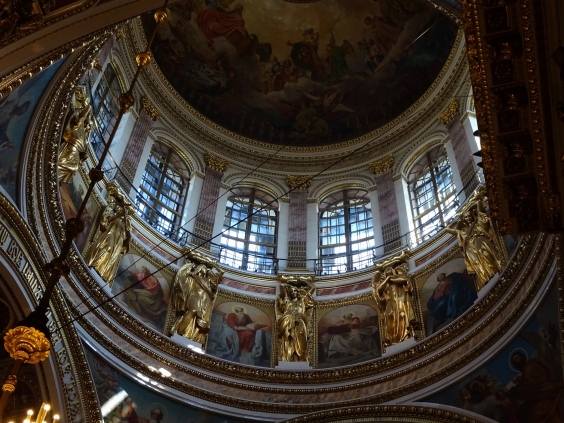
The dome rises 101.5 mtrs (333 ft) and is plated with gold, and is supported by twelve statues who are angels.

I found the artwork more impressive here than in the previous church.

Ceiling and side areas.

In 1931 the cathedral became a museum of the History of Religion and Atheism.

In the centre of the above picture you can just see a white bird, (representing the Holy Spirit), which is a dove. The dove was removed in 1931 and the first public demonstration of the Foucault pendulum took place to show the evidence of the Earth’s rotation.

Garden of Eden around the wall.

Originally the pictures were paintings hanging from the walls, until they realised that the weather was causing them to deteriorate, Auguste de Montferrand ordered the painting to be copied as mosaics.
With the collapse of the Soviet Union the cathedral returned to being a place of worship and in January of 2017 it was transferred to the Russian Orthodox church.

One of the side chapels, sorry about the slight tilt.
After our group of twelve had gathered outside, the guide said that we would visit another church . . . there was a low moan indicating that some had had their fill of churches. As we were in the new democratic Russia we took a vote, and nine voted to return to the ship and three for carrying on. We knew that we would not be back on board until just after 4.00 pm and we had experienced two very long days, and today had started at 7.00 am at passport control, and boarding the bus at 7.30 am.
The guide was quite surprised that most of us wanted to return to the ship, and forfeit visiting the next ‘iconic’ church.
We were back on board about 4.15 pm just in time for a shower before dinner and to focus on a spot of R & R.

I’d been looking forward to renewing my friendship with Mr Smith for an an hour or so before dinner . . .
Goodbye St Petersburg, thanks for the experience and memories., which were very different to those of 1965.


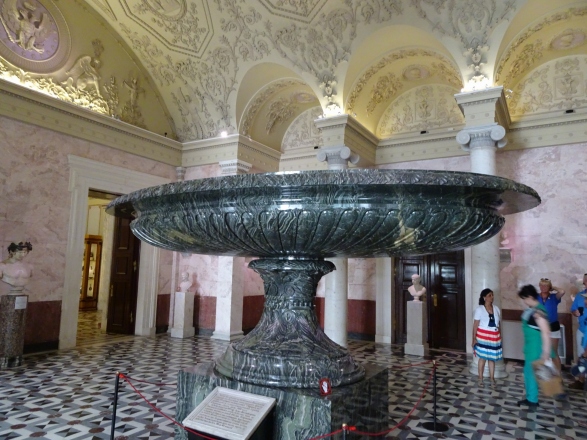



 Malachite urn, and the table is also malachite.
Malachite urn, and the table is also malachite.









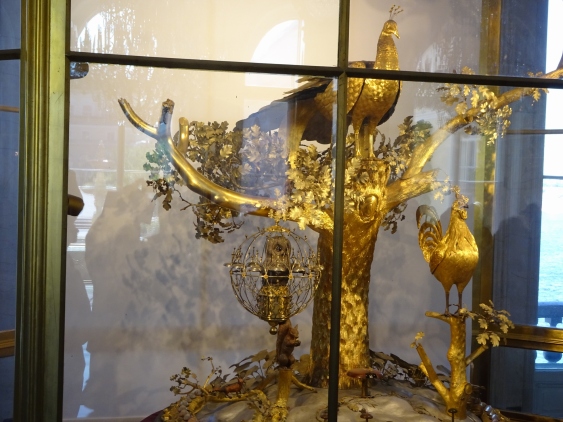
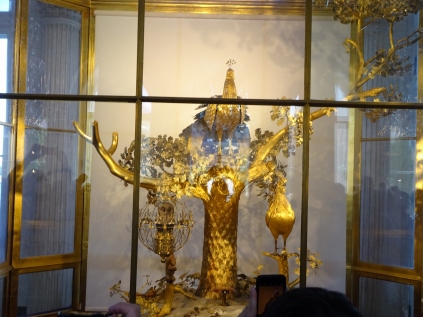



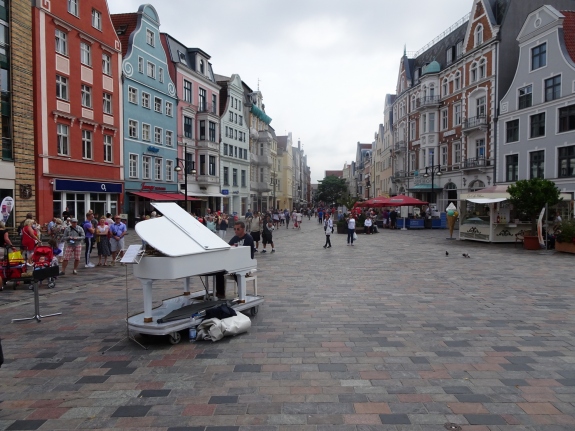
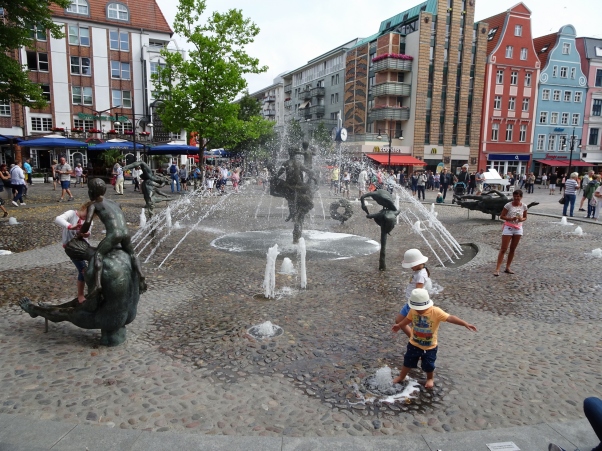


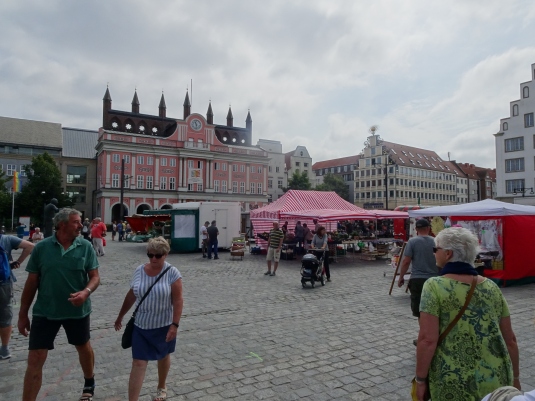

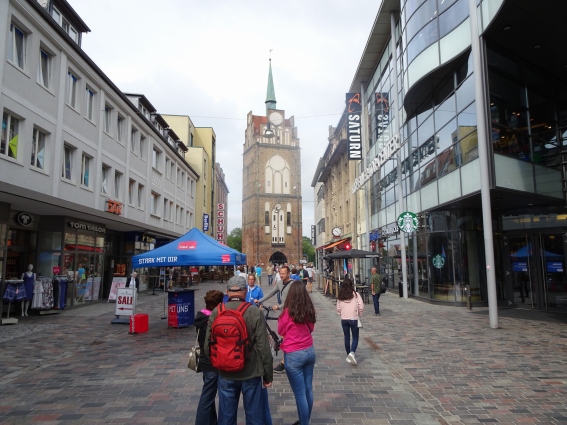






















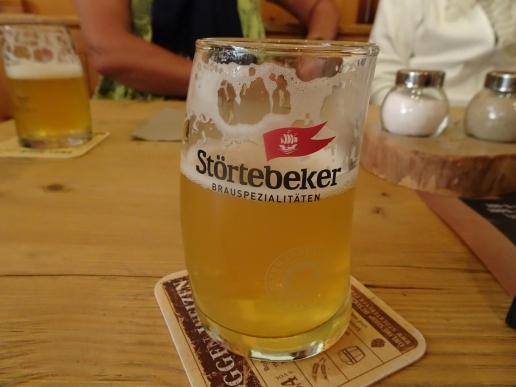









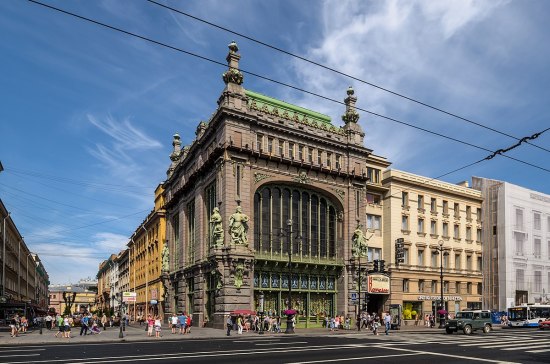




 The price of the middle white item is 120r, I think this means grams, so on the right it states 240 PY6 / RUB, so I assume it is 240 rubbles.
The price of the middle white item is 120r, I think this means grams, so on the right it states 240 PY6 / RUB, so I assume it is 240 rubbles.

 Lightly salted salmon & trout & the eel was smoked cured.
Lightly salted salmon & trout & the eel was smoked cured.














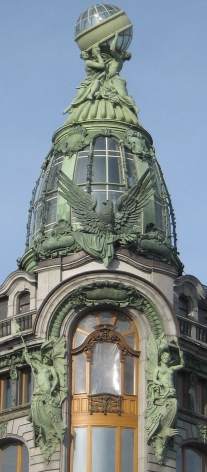


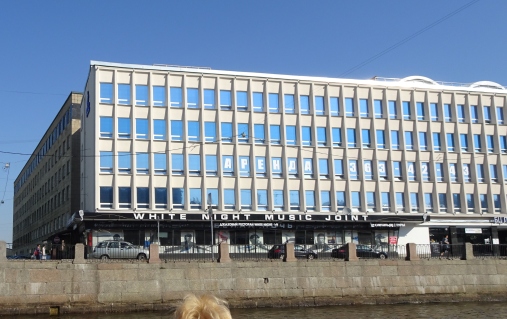





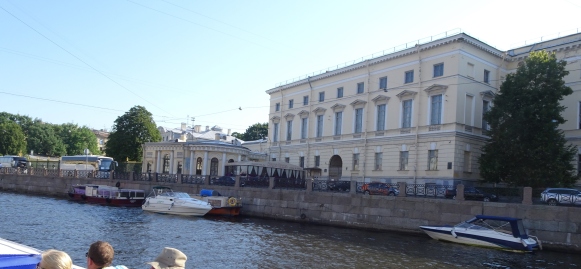


































































 The Rostral Columns
The Rostral Columns





 HMS Conway moored off Plas Newydd
HMS Conway moored off Plas Newydd The Peter & Paul fortress – Peter the Great had this built for defense against the Swedish forces during the Great Northern War (1700-1721), it was designed as a star fortress.
The Peter & Paul fortress – Peter the Great had this built for defense against the Swedish forces during the Great Northern War (1700-1721), it was designed as a star fortress.

















































